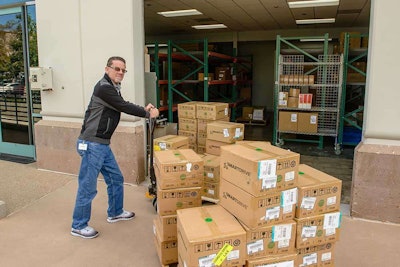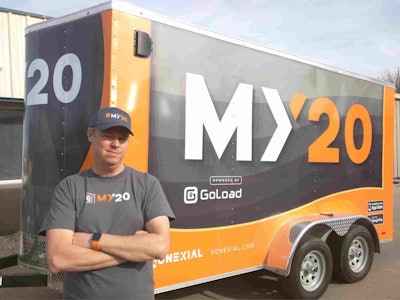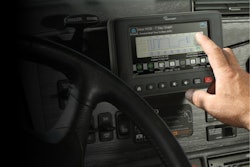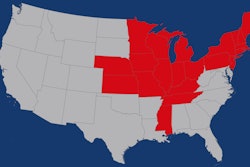 Photo by Tim Peacock, courtesy of SmartDrive.
Photo by Tim Peacock, courtesy of SmartDrive.The sun is setting on 3G cellular networks, and many fleets are looking to escape from the shadows cast by their soon-to-be-outdated Internet of Things (IoT) devices.
The disruption for consumers should be minimal as most already use devices that are connected to 4G and faster LTE networks. The impact of networks cutting 3G service could be significant and widespread for fleets, however.
Verizon will be ending its 3G service this year. AT&T, Sprint and T-Mobile have not publicly given timelines for a 3G cutoff, though it seems likely 3G will be completely dark by the end of 2021.
In the United States, an estimated 7.5 million IoT devices based primarily on 3G are still in use by fleets of all types, says Steve Mitgang, chief executive of SmartDrive, which offers a vision-based safety and telematics platform.
“A once-in-a-generation technology change is being forced upon everybody,” he says.
The 7.5 million estimate comes from Gartner, a technology research firm, Mitgang notes.
The sunsetting of 3G will create a new wave of investment in fleet telematics that could eclipse 2017 and 2018 when fleets were buying to comply with the electronic logging device (ELD) mandate, says Ken Evans, chief executive of Konexial.
Konexial is an ELD and telematics software supplier with a product stack that includes an integrated load matching platform for fleets and owner-operators.
 Ken Evans, CEO of Konexial, says its My20 app updates a dynamic GoLoad freight matching platform to send relevant opportunities directly to a driver’s smartphone.
Ken Evans, CEO of Konexial, says its My20 app updates a dynamic GoLoad freight matching platform to send relevant opportunities directly to a driver’s smartphone.Based on market research, Evens says that in 2017-18 fleets installed telematics in an additional 10 to 12 percent of class 8 vehicles on the road — about 300,000 to 600,000 trucks — that were not already equipped, to comply with the ELD mandate.
“The uptake,” he says, “was much lower than anyone anticipated.”
The sunsetting of 3G wireless, however, will spur replacement of devices in more than 80 percent of the trucks on the road, Evans says, as many fleet are still using 3G telematics systems that are 10 years old.
Taking a fresh approach
The cutoff of 3G service is one of several factors propelling investments in new IoT technology. Simpler hardware installation and more flexibility and integration of software applications are others, Mitgang says.
Fast installation time has become the standard of modern IoT devices. The My20 ELD and telematics platform, for instance, can be installed in five minutes, says Evans, by plugging a small device into a vehicle’s diagnostic port and downloading an app to a smartphone.
The My20 ELD uses locations and other information to power Konexial’s dynamic load board. The company also pipes in the same data from third-party telematics suppliers through an open API.
Data integration is a more sophisticated challenge. Many fleets currently run multiple devices from separate vendors for mobile driver workflow and information capture. A core telematics system that runs ELDs, driver communications and vehicle performance data, for example, may run alongside a different system that records video footage of safety-critical events.
Each system has traditionally required a software and wireless data subscription. The monthly cost of two or more IoT systems can quickly exceed $60 per truck, in addition to the costs of installing and maintaining multiple IoT platforms, Mitgang says.
Convergence of data
Fleets looking to combine data from multiple systems for analysis may struggle to accomplish their goals when data comes from different systems. Mitgang notes the difficulty of analyzing data from collision mitigation, telematics and video event recording systems from separate vendors.
Each of these systems will have a different time clock for the data record, he says. The collision mitigation system may say the driver applied brakes at 1:12 PM, while the telematics system says the braking started at 1:10 but the video event recorder says something else.
These and other differences in data records are significant, Mitgang says, and fleets will often use manual processes to combine data in spreadsheets for reporting and analysis.
 Steve Mitgang, chief executive of SmartDrive. Photo by Tim Peacock, courtesy of SmartDrive.
Steve Mitgang, chief executive of SmartDrive. Photo by Tim Peacock, courtesy of SmartDrive.New products continue to combine driver and vehicle data with video solutions to capture safety-critical events and data. This convergence of data is creating one source of truth by aligning video and telematics data for in-depth analysis of fleet safety, maintenance, operations, fuel and other areas, he says.
“It’s not that hard to do if you have one data platform designed to bring data streams together,” Mitgang says. “I think that fleets that want to lean in to analytics will have to change and need something that will bring everything together.”
In October 2018, SmartDrive announced a partnership with Geotab that converges vehicle devices, wireless subscriptions and data onto a single platform and unified data stream.
The offering lets fleets select best-of-breed applications without incurring additional costs associated with managing and maintaining multiple onboard devices.
If the predictions are correct, the investments made in telematics systems for the ELD mandate are a primer for the next wave coming as the sun sets on 3G.














